Moxibustion - Moxibustion

|
A form of traditional Chinese medicine in which moxa is burned at specific points on the skin (moxibustion points) to stimulate the body with heat directly or indirectly, promoting the body's ability to heal from a variety of illnesses. It is officially called moxibustion, moxibustion art, or moxibustion therapy. The method of burning parts of the skin to treat various skin diseases and swellings has been seen in ancient societies around the world, and even today a therapy called "rakutetsu" is used in veterinary medicine. This method involves burning the vital points of the disease with a heated iron to treat inflammation of the muscles and tendons. It is said to be particularly effective in treating chronic tendonitis in racehorses. This therapy was also once used for indigestion and eye diseases in animals. When this type of therapy is used on humans and the system of treatment becomes more sophisticated, it can be called moxibustion. [Yoshio Manaka and Kazuko Itaya] historyThe "Suwen" chapter of the "Huangdi Neijing" (Huangdi Inner Jing), the oldest medical text in China, describes in detail how to use moxibustion for fevers. It also describes the surgical method of burning, saying, "Apply three shou to the area where the dog bites (meaning treatment)" (the word shou is used to count the number of times to apply moxa and the amount of moxa used). The "Sensual" chapter in the "Lingshu" chapter of the "Huangdi Inner Jing" also recommends moxibustion for chronic illnesses that weaken the body, saying, "When yin and yang are both deficient, fire will naturally affect this." These documents show that moxibustion has been practiced in China for several thousand years and that the method was systematized. Moxibustion was introduced to Japan in 562 by Zhisong of Wu, who brought the "Mingtang Tu" (Ming Hall Tu) and other medical books. Later, the Taiho Code (701) established the status of physicians in the "Ishitsu-ryo" (Certificate of Medical Diseases), which included the titles of acupuncturist, acupuncturist doctor, and acupuncturist. During the Heian period, Tamba Yasuyori was the first in Japan to write the 30-volume Chinese medical treatise "Ishinpo," two of which contain detailed descriptions of acupuncture and moxibustion prescriptions. During the wars of the Kamakura and Muromachi periods, moxibustion therapy was widely applied to the field of surgery. In the mid-Edo period, Goto Konzan advocated the theory that "diseases are caused by the retention of qi" (the theory of qi retention), and vigorously promoted moxibustion therapy, along with bear gall, chili pepper, and hot spring therapy, as a treatment to promote circulation throughout the body. Europeans who visited Japan during the Edo period saw that moxibustion was widely practiced in Japan, and one of them reported that "since it is practiced by the Japanese, who are the most intelligent of all Orientals, it must be a rational therapy," and introduced the term to the West as "moxa," a corrupted version of the Japanese word moxa. Moxibustion was originally learned by doctors along with acupuncture and used in treatment, but eventually ordinary people began to practice it themselves. It became popular as a folk remedy especially from the middle to late Edo period, and doctors began to look down on it. With the advent of the Meiji period, acupuncture and moxibustion medicine was swept away by the wave of Western civilization, and only a small portion of it remained as a folk remedy. This situation continued until after the Second World War, but in 1947 (Showa 22), a status law called the "Anma Practitioner, Acupuncturist, Moxibustion Practitioner and Judo Therapist Law" was enacted and promulgated. This status law was partially revised in 1970 to become the "Law Concerning Anma Massage, Shiatsu Practitioner, Acupuncturist, Moxibustion Practitioner, etc.", which remains in effect to this day. With the enactment of this law, people who wanted to become moxibustion practitioners had to take and pass a national examination. [Yoshio Manaka and Kazuko Itaya] The principle of effectiveness of moxibustionLike acupuncture, the stimulating effect of moxibustion causes a reflex in the central nervous system (cerebrospinal nerves) or autonomic nerves, which brings about changes in blood circulation and tension from the surface of the skin or muscle layer to internal organs. This is why phenomena such as pain relief are seen. Furthermore, recent research has revealed the mechanism of action in which stimulation activates the pituitary-adrenal system via the central nervous system, resulting in the secretion of anti-inflammatory hormones or morphine-like substances with analgesic effects. In addition, research has been conducted in Japan that suggests that the burns caused by moxibustion break down cells, producing a type of protein breakdown product that is absorbed into the blood and promotes recovery. Based on this principle of efficacy, moxibustion is used clinically for the following purposes: (1) Analgesic effect for many painful diseases, especially severe pain caused by spasms of smooth muscles in the intestines, bile duct, ureter, blood vessels, etc., and pain and stiffness caused by tension in skeletal muscles. (2) It improves blood circulation, and in addition to treating numbness and paralysis, it improves blood circulation in the brain and limbs, regulating blood pressure, and also affects the endocrine organs, regulating hormone secretion. (3) By doing this over the long term, it can improve obesity and being thin. (4) Improves decreased digestive function. (5) It has an effect on the immune system and hemopoietic system, thereby improving the complexion and making it less likely for you to catch a cold. (6) Improves autonomic nervous system imbalance and treats baldness, warts, skin keratosis, lack of sleep, etc. It is also effective against skin pigmentation. (7) Treatment of allergic diseases such as asthma, atopic dermatitis, and hives. [Yoshio Manaka and Kazuko Itaya] Types of MoxibustionMoxibustion can be broadly divided into scarring and non-scarring. Scarring moxibustion involves placing moxa directly on the skin, lighting it with incense, and burning it, which causes small burns on the skin and leaves behind scars. An even more intense form of moxibustion is called da-no-moxibustion, in which a highly stimulating ointment is applied for a while after the moxibustion, causing an artificial ulcer (the size of a 10-yen coin). This is used as a modulation therapy for intractable diseases. Research has shown that the pharmacological effects of moxa ingredients in scarring moxibustion are effective in treating the condition. Non-scarring moxibustion is a method that does not leave scars, and involves placing thin pieces of miso, garlic, ginger, etc. on the moxa points and then applying moxibustion over them. Non-scarring moxibustion is suitable for people who dislike moxibustion scars, fear the pain of moxibustion, or are hypersensitive to heat. In addition to the above, there are many other variations on scarless moxibustion, such as moxa head acupuncture, in which a needle is inserted and the moxa is burned with the handle, electric moxibustion, in which moxa is heated with electric heat, and even indirect heating by burning moxa inside a tube, or heating it by bringing a cigar-shaped piece of moxa close to the area.These techniques are widely used as folk remedies. [Yoshio Manaka and Kazuko Itaya] Acupuncture and moxibustionIn Chinese medicine, acupuncture and moxibustion are collectively called acupuncture and moxibustion, and are the same type of treatment. Both treatments are performed at points on the surface of the body called "tsubos" (acupuncture points). The effects are similar in many ways. The difference is that acupuncture requires special tools and the insertion technique requires skill, so not just anyone can perform it; you must rely on an acupuncturist. On the other hand, moxibustion is easy to do at home if you know the pressure points, and it is also popular as a folk remedy. However, moxibustion has been disliked, especially by young women, because it leaves scars on the skin and when burning the moxa, even if done well, it hurts for only a moment. However, in recent years, scarless moxibustion has been devised, as mentioned above, and perceptions of moxibustion are changing. Moxibustion is particularly effective for constitutional diseases that are difficult to treat even with modern medicine, autonomic nervous system disorders, and geriatric diseases that are difficult to cure, so it is useful for amateurs to know the basics of moxibustion. It is also thought that moxibustion should be used more as an emergency treatment in places where doctors are not available. [Yoshio Manaka and Kazuko Itaya] "Dr. Manaka's Kyu and Acupuncture" by Yoshio Manaka (1971, Shufu no Tomosha) " "Famous Moxibustion Selections and Commentary" by Isaburo Fukaya (1977, Kanshindo Publishing) [References] |Source: Shogakukan Encyclopedia Nipponica About Encyclopedia Nipponica Information | Legend |
|
中国伝統医学の一つで、もぐさ(艾)を皮膚上の特定の場所(灸点)で燃やし、身体に直接的あるいは間接的に温熱刺激を与え、多様な疾患の治癒力を促進させる療法。正式には灸治(きゅうじ)、灸術、灸療法とよばれる。皮膚の一部を焼いて各種の皮膚疾患や腫(は)れ物を治療する方法は、世界各地の古代社会からみられるものであり、現在でも獣医学では「烙鉄(らくてつ)」という療法が用いられている。これは、熱したこてで疾患の急所を焼き、筋や腱(けん)の炎症を治す方法である。とくに、競走馬の慢性腱炎の治療に効果的であるという。この療法は、かつては動物の消化不良、眼病等にも用いられた。こうした療法を人間で行い、その治療の体系が巧妙になったものが灸治といえる。 [間中喜雄・板谷和子] 歴史中国最古の医書『黄帝内経(こうていだいけい)』を構成している「素問(そもん)」の骨空篇(へん)には、熱病に対する灸のやり方が詳しく書かれている。また、「犬噛(か)む所の処(処置の意)に灸すること三壮」と外科的な焦灼(しょうしゃく)法も記されている(壮は灸を据える回数や、もぐさの分量を数えるのに用いる)。同じく『黄帝内経』の「霊枢(れいすう)」にある官能篇では、「陰陽皆虚すれば火自(おのずか)ら此(これ)に当る」として、体力の衰えた慢性病に灸治を勧めている。これらの文献からも、中国では数千年前から灸治が行われ、その方法が体系化されていたことがわかる。日本には、562年呉(ご)の知聡(ちそう)がもたらした『明堂図(めいどうず)』その他の医書によって灸治が伝えられた。その後、大宝律令(たいほうりつりょう)(701)では、医師の身分を定めた「医疾令(いしつりょう)」のなかで鍼(はり)師、鍼博士、鍼生等の制が設けられている。平安時代には丹波康頼(たんばのやすより)が日本で初めて全30巻からなる中国医学大系『医心方(いしんほう)』を著し、そのうちの2巻に鍼灸(しんきゅう)の処方が詳しく述べられている。鎌倉時代から室町時代にかけての戦乱の時期には、灸治が外科領域に大いに応用された。江戸中期の後藤艮山(こんざん)は、「病気は一気の留滞によっておこる」という説(一気留滞論)を唱え、全身の循環を促進する治療の一つとして、熊胆(ゆうたん)、蕃椒(ばんしょう)(トウガラシ)、温泉療法とともに、灸治を盛んに奨励した。 江戸時代に来日したヨーロッパ人は、日本で灸治が広く行われていることを見聞し、そのうちの1人は、「東洋人のうちでは、もっとも知能的である日本人が行っているのだから、かならずや理にかなった療法であろう」と報告し、日本語のもぐさをなまって「モクサ」moxaとして西洋に伝えた。 灸治は、元来は医師が鍼法とともに学んで治療に用いたものであるが、やがて一般の者が自分で行うようになった。とくに江戸時代の中期から後期にかけては民間療法として広まり、医師はやや灸治を蔑視(べっし)するようになった。明治時代を迎えると同時に、鍼灸医学も西洋文明の波に押し流され、民間療法としてわずかに残されたにすぎなくなった。こうした状態が第二次世界大戦後まで続くが、1947年(昭和22)「あん摩師、はり師、きゆう師及び柔道整復師法」という身分法が制定公布された。この身分法は1970年に一部改正され、「あん摩マツサージ指圧師、はり師、きゆう師等に関する法律」となり、現在に至っている。この法律の制定により、灸師になる者は国家試験を受け、合格しなければならないこととなった。 [間中喜雄・板谷和子] 灸の奏効原理灸は鍼と同様、その刺激効果によって中枢神経(脳脊髄(せきずい)神経)、あるいは自律神経に反射がおこり、皮膚表層または筋肉層から内部臓器に血行の変化、緊張の変化がもたらされる。このため、疼痛(とうつう)の緩解等の現象がみられるわけである。また、最近の研究では、刺激を加えることによって、中枢神経系を介して脳下垂体副腎(ふくじん)系が作動し、消炎ホルモンの分泌、あるいは鎮痛作用をもつモルフィン様物質が分泌されるという作用機序(メカニズム)が明らかになってきている。 このほか、灸治では、その熱傷によって細胞が分解され、一種のタンパク分解産物が生じ、これが血液のなかに吸収され、回復を促す働きをもつという研究も、日本では行われてきた。こうした奏効原理に基づいて、灸治は臨床的に次のような目的で利用されている。 (1)多くの痛みのある疾患、とくに腸管、胆(たん)管、輸尿管、血管等の平滑筋のけいれんによっておこる激痛や、骨格筋の緊張に由来する痛み、凝りなどの鎮痛作用。 (2)血液循環をよくし、しびれ感、麻痺(まひ)感等の治療のほか、脳の血行、四肢の血行をよくして血圧を調整する。また、内分泌器官に影響を与え、ホルモンの分泌を調整する。 (3)長期に行うことによって、肥満ややせすぎを改善する。 (4)消化機能の低下を改善する。 (5)免疫機構、造血器に作用を及ぼすことによって血色などをよくし、感冒にかかりにくくする。 (6)自律神経失調を改善し、円形禿頭(とくとう)症、いぼ、皮膚の角化症、睡眠不足などを治療する。また、皮膚の色素沈着にも有効である。 (7)喘息(ぜんそく)、アトピー性皮膚炎、じんま疹(しん)などのアレルギー性疾患の治療。 [間中喜雄・板谷和子] 灸の種類灸は有痕(ゆうこん)灸と無痕灸とに大きく分けられる。有痕灸とは、もぐさを直接皮膚上にのせて線香で点火し、燃焼させる方法で、皮膚に小さな熱傷をおこし、灸痕が残る。さらに強烈な灸は打膿(だのう)灸といって、施灸後、強い刺激作用のある膏薬(こうやく)をしばらく貼用(ちょうよう)し、人工的潰瘍(かいよう)(10円硬貨大)をおこさせるものである。これは、難治な疾病の転調療法として用いられる。有痕灸では、もぐさの成分がもつ薬理作用が治療のうえで有効であるという研究報告もされている。無痕灸は、灸痕を残さない方法であり、灸点部に、みそ、ニンニク、ショウガなどの薄片を置き、その上から灸をする。無痕灸は、灸痕を嫌う人、灸による疼痛を恐れる人、熱刺激に過敏な人に適当である。無痕灸には、このほか、鍼を刺し、その柄でもぐさを焼く灸頭鍼、電熱で温める電熱灸、さらには筒のなかでもぐさを燃やして間接的に温めたり、葉巻状のもぐさを近づけて温めるなどの多くの変法がくふうされており、民間療法としても広く用いられている。 [間中喜雄・板谷和子] 鍼と灸中国医学では鍼と灸をあわせて鍼灸とよび、同系列の治療法である。いずれも体表上の「つぼ」とよばれる点状の部分(経穴(けいけつ))で治療する。効果もほぼ似た点が多い。相違点は、鍼は、特殊の治療具を必要とし、刺入操法に技術が要るので、だれでも行えるというわけにはいかず、鍼師に頼まなければならない。 一方、灸は、つぼを知れば家庭でも行えるという手軽さがあり、民間療法としても普及している。しかし、灸には、皮膚に灸痕が残ったり、もぐさを焼くとき、うまくやってもほんの一瞬ではあるが痛みがあるといったことから、若い女性を中心に嫌われてきた。ところが最近では、前述のような無痕灸もくふうされているので、灸に対する認識も変わりつつある。ことに、現代医学でも治療しにくいとされる体質性疾患、自律神経失調、根治困難な老人病に灸は有効であり、素人(しろうと)が灸の基本を知っておくことは有意義である。また、医師の不在な場所での救急療法として、灸はもっと利用されてもよいと思われる。 [間中喜雄・板谷和子] 『間中喜雄著『間中博士のキュウとハリ』(1971・主婦の友社)』▽『深谷伊三郎著『名家灸選釈義』(1977・刊々堂出版社)』 [参照項目] |出典 小学館 日本大百科全書(ニッポニカ)日本大百科全書(ニッポニカ)について 情報 | 凡例 |
<<: Sphere - Kyu (English spelling)
>>: Madame Jeanne‐Marie Bouvier de la Motte‐Guyon
Recommend
Clematis florida (English spelling) Clematisflorida
…[Yutarou Nishibe]. … *Some of the terminology th...
Cosmos bipinnatus
… [Eiichi Asayama]. … *Some of the terminology th...
Ishibai Iwanori - Ishibai Iwanori
...The closely related C. complanatum Hue is dist...
Salad (Japanese) - Salad
A dish made by mixing fish, shellfish, vegetables,...
Insulin
…It is the present-day city of Ishan al-Bachrīyāt...
Kaminaohi no Mikoto - Kaminaohi no Mikoto
...In the Kojiki and one of the Nihon Shoki, this...
Calabrian Formation - Calabrian Formation
…In the past, the Quaternary Period was defined a...
Chinese Academy of Sciences
The Academy of Sciences of the People's Repub...
Ozato Plateau
...Population: 11,175 (1995). The area is made up...
Family background - Iegara
The ranking of a family is determined by the quali...
Saionji family
The Kan'in line of the Northern branch of the...
flannel
In Japan, it is also called flannel for short. A t...
The Pillow Book - Pillow Book Picture Scroll
A picture scroll from the late Kamakura period (e...
The School of Eris Eretria
…Founded by Socrates' students, excluding Pla...
Via Aurelia (English name)
… The main roads in Rome, especially in Italy, ar...


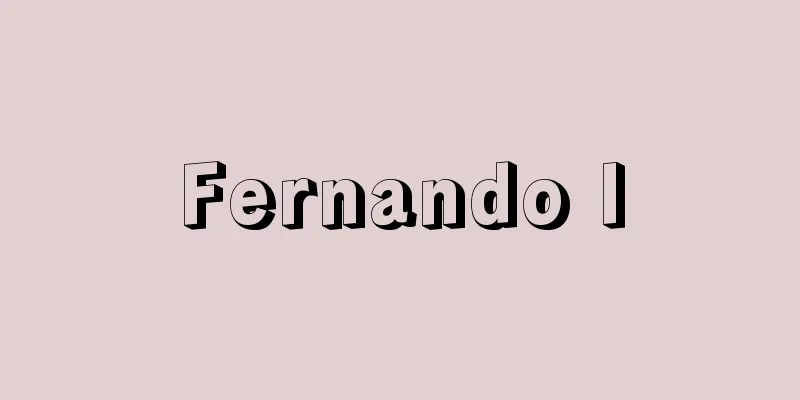


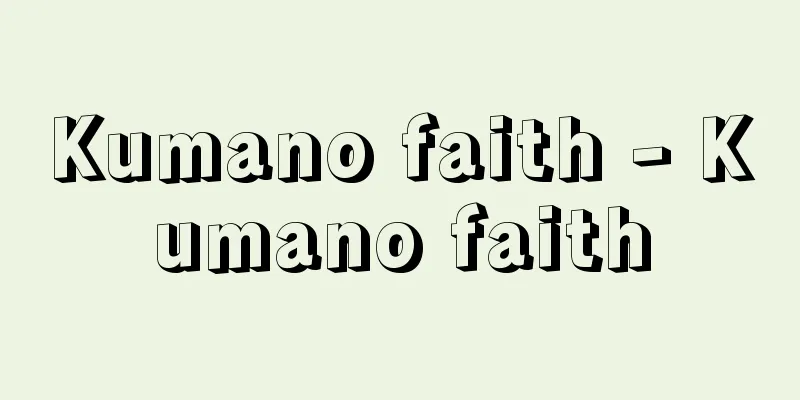
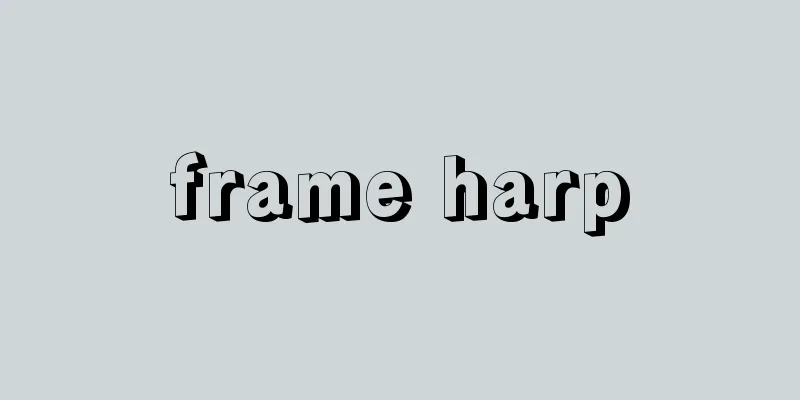
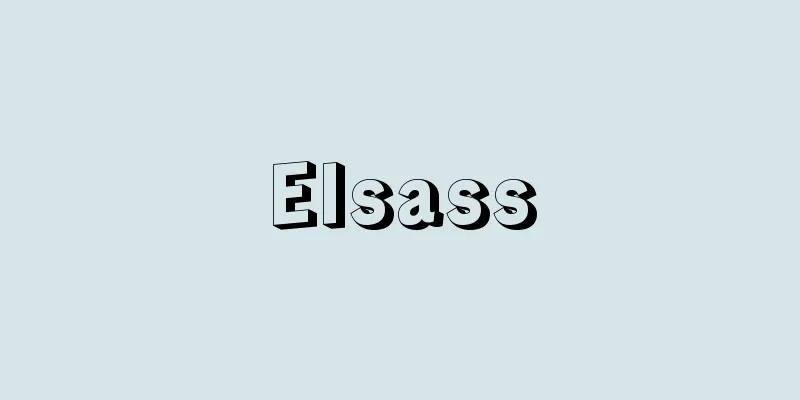
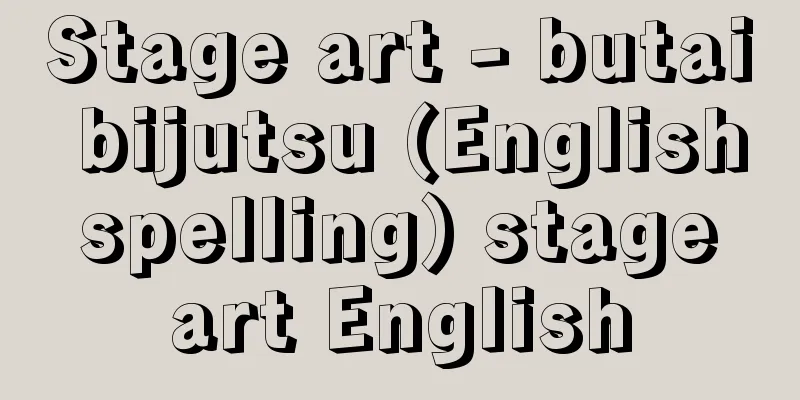
![Slope [town] - Saka](/upload/images/67cba7452222a.webp)